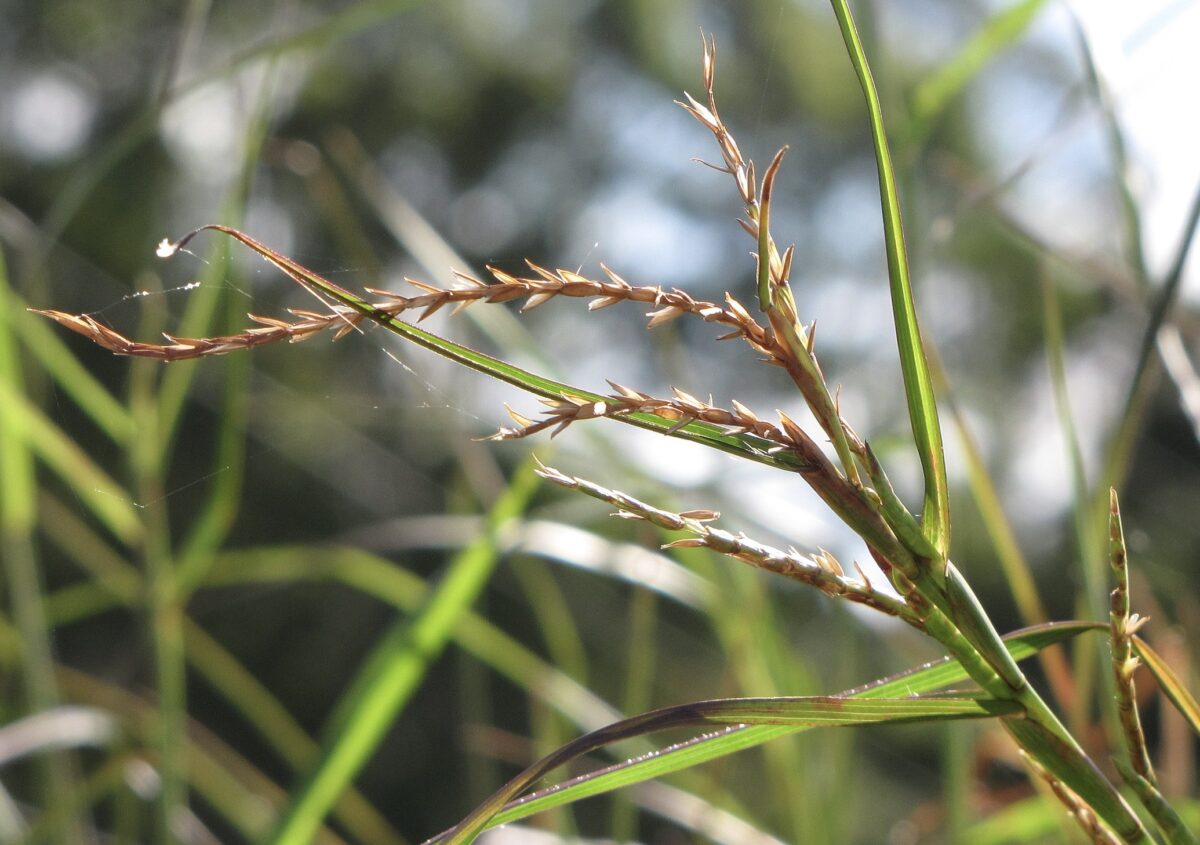Page snapshot: Quick facts about limpograss (Hemarthria altissima), a tropical forage grass primarily used by farmers as a pasture grass.
Topics covered on this page: What is limpograss?; Where is limpograss found?; How is limpograss grown?; How is limpograss used?; What are the benefits and drawbacks of limpograss as a forage grass?; Resources.
Credits: Funded by the National Science Foundation. Any opinions, findings, and conclusions or recommendations expressed in this material are those of the author(s) and do not necessarily reflect the views of the National Science Foundation. Page by Deme Burns (2023).
Updates: Page last updated August 8, 2023.
Image above: Close up of limpograss (Hemarthria altissima) inflorescence with mature spikelets, Haiku, Maui, Hawaii. Photo by Forest and Kim Starr (Wikimedia Commons, Creative Commons Attribution 3.0 United States license, image cropped and resized).
What is limpograss?
Limpograss, also called swamp couch and red swamp grass, is a tropical forage grass that prefers high humidity and is well adapted to wet soil. It is mainly used as a forage grass (a grass used for pasture, silage, and hay crops).

Limpograss (Hemarthria altissima) spikelets; the white feathery structures protruding from the inflorescences are stigmas (pollen-receiving structures). Maui, Hawaiian Islands. Photo by Forest and Kim Starr (Wikimedia Commons, Creative Commons Attribution 3.0 United States license, image cropped and resized.)
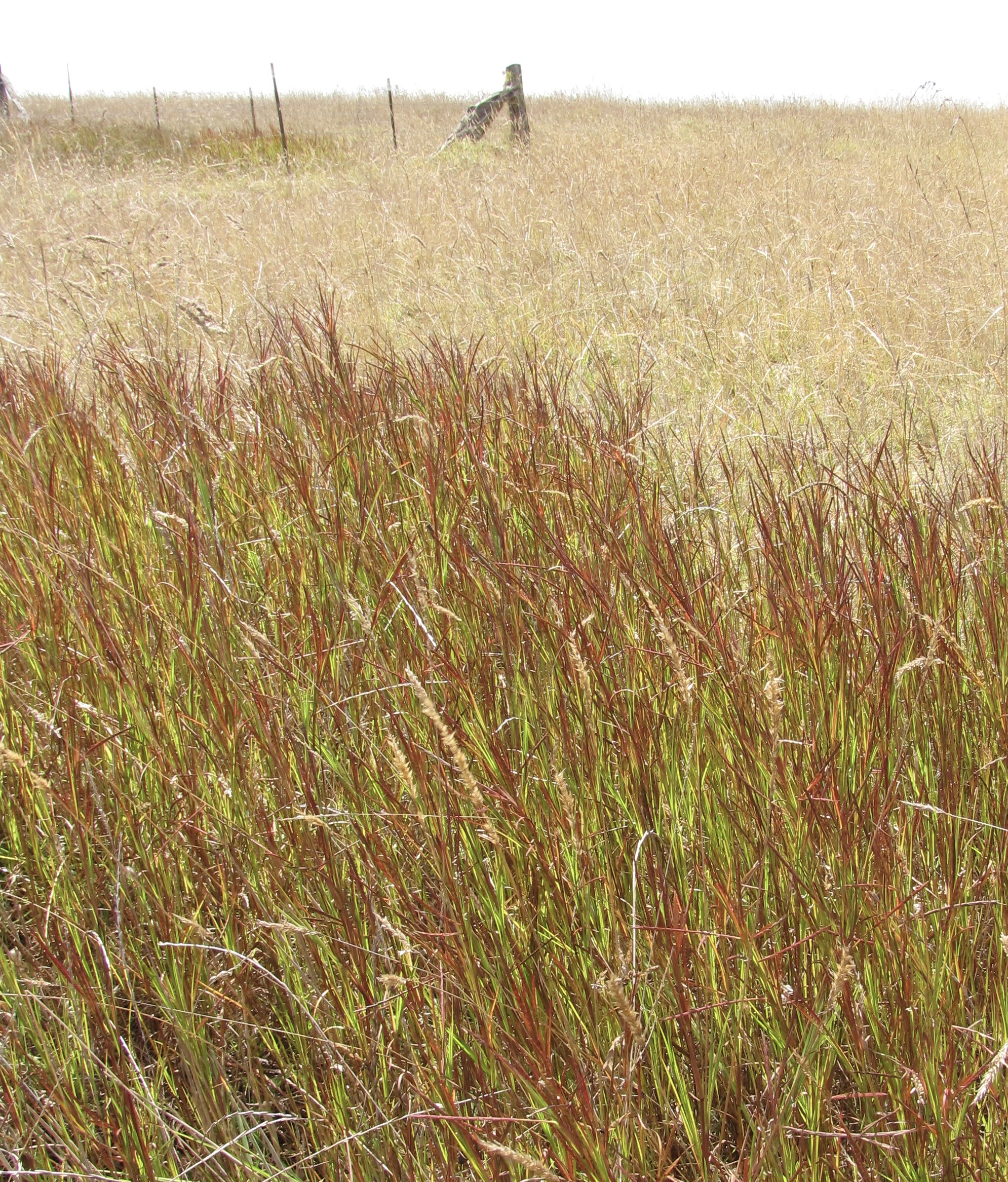
Limpograss (Hemarthria altissima) in a pasture, Maui, Hawaiian Islands. Photo by Forest and Kim Starr (Wikimedia Commons, Creative Commons Attribution 3.0 United States license. Photo cropped and resized.)
Where is limpograss found?
The majority of limpograss is native to the Old World tropics and subtropics, including large parts of Africa and Asia. Limpograss is also native to Europe in areas of high heat and humidity, specifically Greece, Italy, and Spain. Limpograss has been introduced and is cultivated for livestock feed in the Americas, including the southern United States, the Caribbean islands, Central America, and South America. Limpograss has also been introduced to northern Australia.
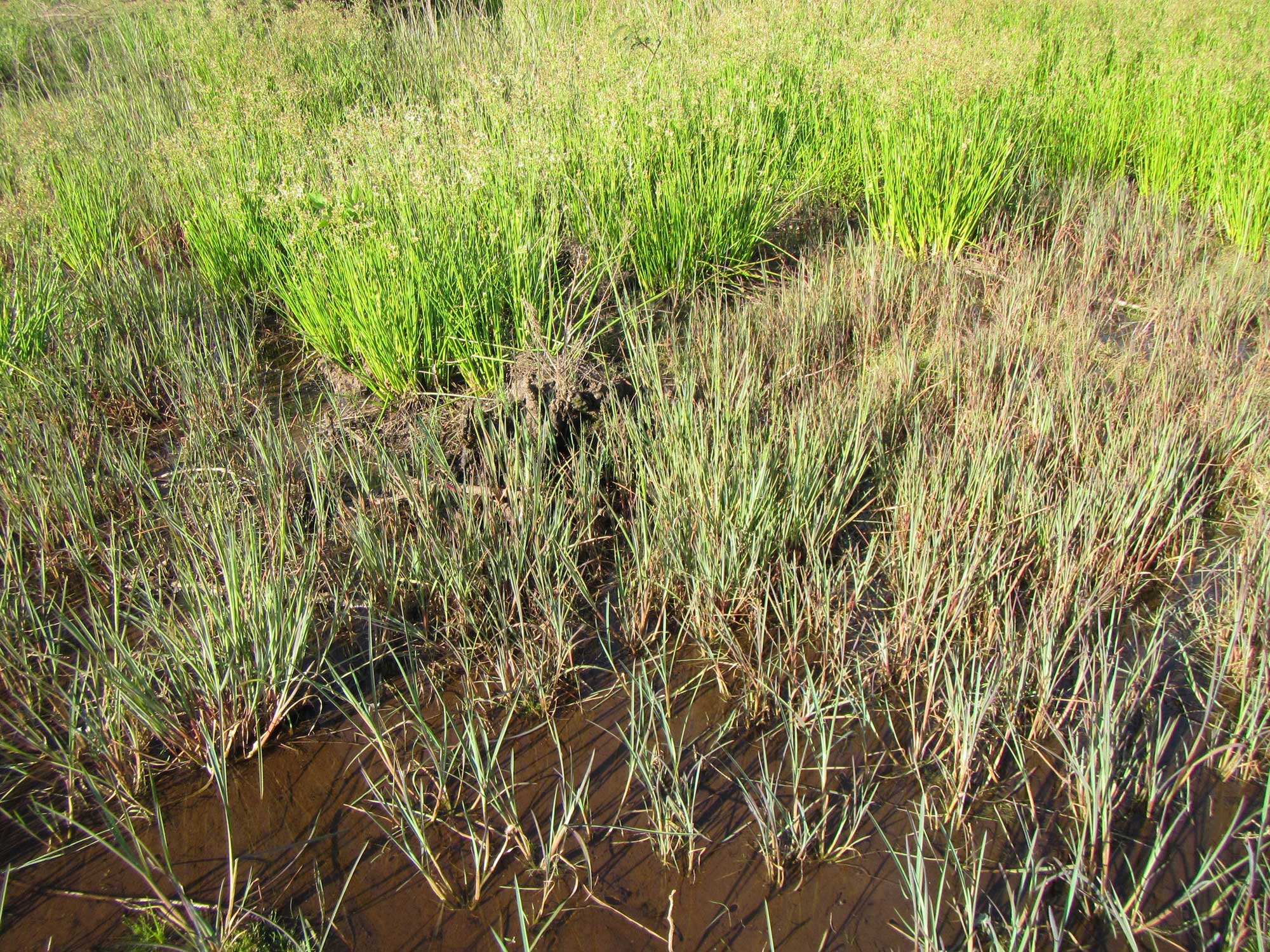
Limpo grass growing in a wetland in South Africa. Photo by douglaseustonbrown (iNaturalist photo 56871740, Creative Commons Attribution-ShareAlike 4.0 International, image resized).
How is limpograss grown?
Limpograss prefers subtropical and tropical climates with temperatures ranging from 60°F and 95°F (16°C and 35°C), and it grows best at temperatures of at least 88°F (31°C). It prefers high humidity and needs lots of moisture to thrive. For this reason, limpograss is often found in swamps, lakes, or in vleis, ephemeral South African wetlands. Limpograss is not drought tolerant, although it is salt tolerant and can grow in somewhat acidic soils.
Limpograss flowers during the summer. Because it usually has poor seed production, it is propagated asexually using cuttings (pieces of plants). Limpograss also spreads by the elongation of stolons (horizontally growing stems).

ISimangaliso Wetlands, South Africa. This is the type of habitat in which limpograss might grow. iSimangaliso Wetland Park, KwaZulu-Natal, South Africa. Photo by Bernard DUPONT. (Wikimedia Commons, Creative Commons Attribution-Share Alike 2.0 Generic license. Photo cropped and resized.)
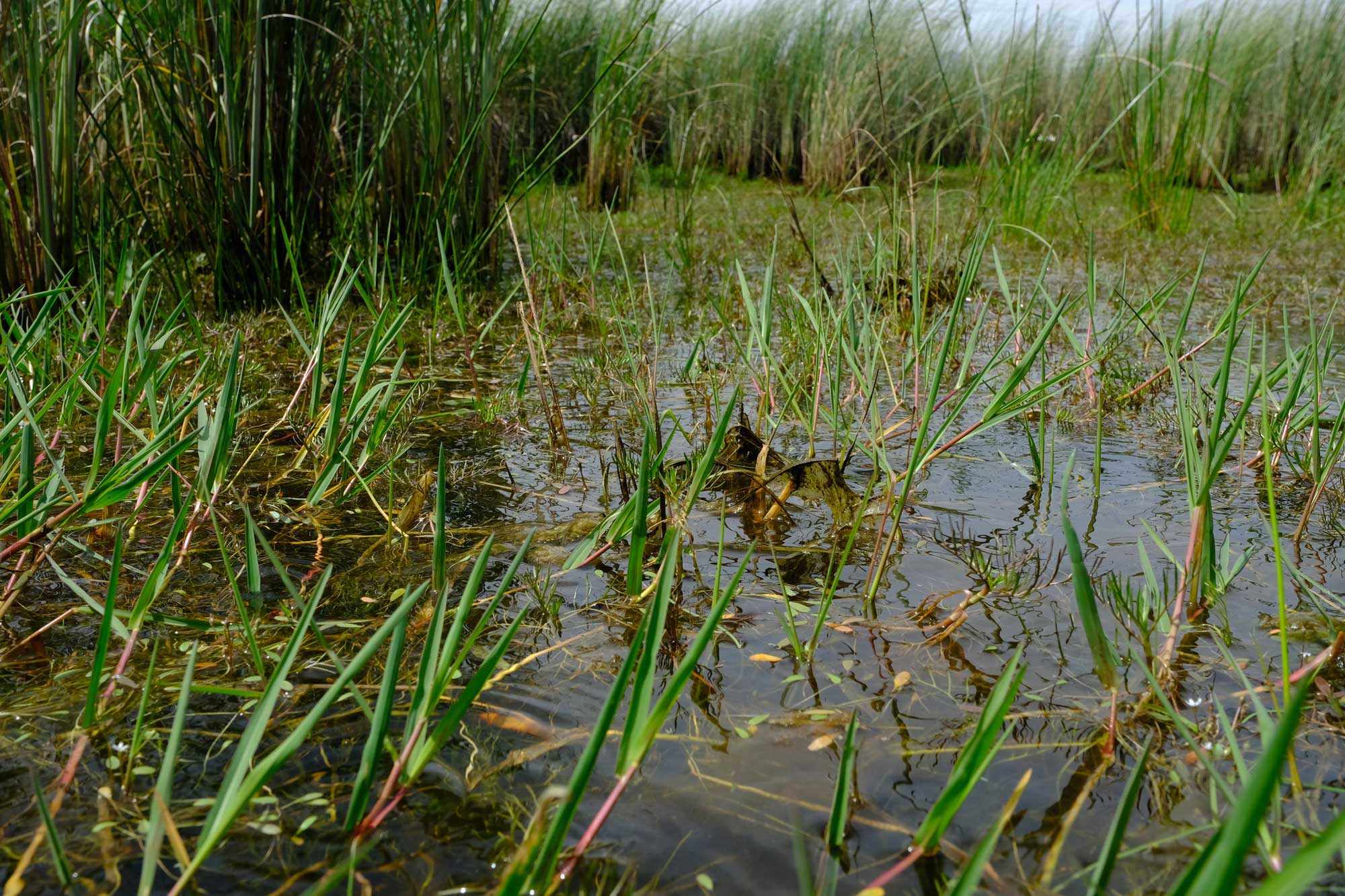
Limpograss growing in a wetland, South Africa. Photo by Nick Helme (iNaturalist photo 102388254, Creative Commons Attribution-ShareAlike 4.0 International, image resized).
How is limpograss used?
Limpograss has a variety of uses. The primarily use of limpograss is as a pasture crop on which livestock graze, mainly beef cattle and occasionally horses. Farmers also cut it to make hay or silage. The grass is relatively nutritious, and the rhizomes are sometimes harvested for food in Lesotho, southern Africa.
Limpograss can also be used for revegetation, erosion control, and suppressing invasive plants (in areas where limpograss is native). Because it tolerates marginal land and soils with high concentrations of aluminum and manganese, limpograss could be used to revegetate areas affected by acid mine drainage (AMD).
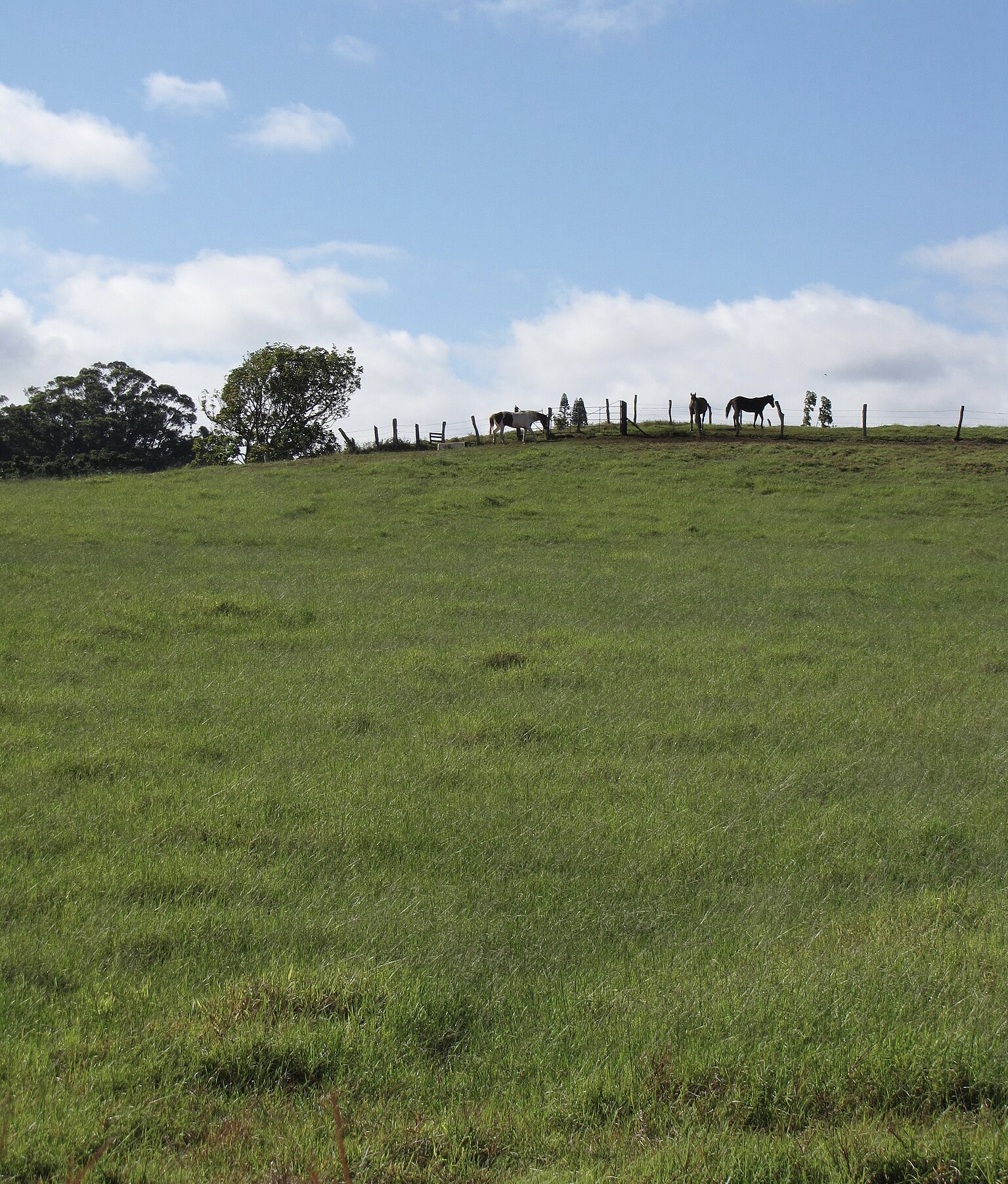
Limpo grass in a pasture with horses, Maui, Hawaiian Islands. Photo by Forest and Kim Starr (Wikimedia Commons, Creative Commons Attribution 3.0 United States license, photo cropped and resized.)
What are the benefits and drawbacks of limpograss as a forage grass?
Limpograss is often used as a forage grass because it is nutritious and easy for livestock to digest. It also does not suffer from leaf diseases nor from attacks by insects, although some varieties are affected by sting nematodes and other pests. Limpograss rarely becomes weedy, in part because it produces relatively few seeds. Nevertheless, limpograss is considered invasive in Florida, U.S.A., where it was introduced in the 1960s or 1970s as a forage.
While it is used as a pasture crop, limpograss cannot withstand long periods of intense grazing. It is also low in protein, although growing the grass with legumes can provide supplemental protein for livestock.
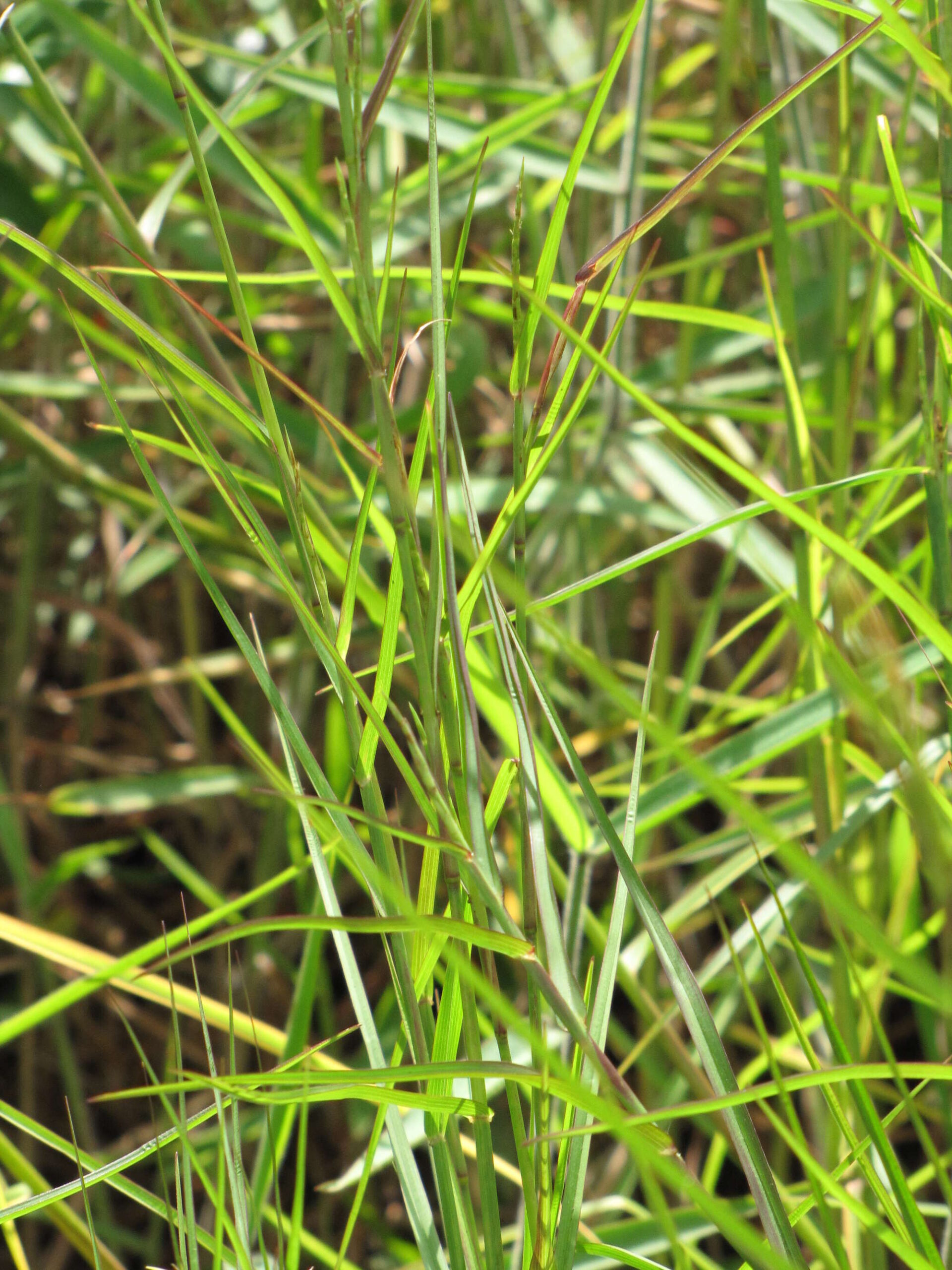
A close up of limpograss in Maui, Hawaiian Islands. Photo by Forest and Kim Starr (Wikimedia Commons, Creative Commons Attribution 3.0 United States license. Photo cropped and resized.)
Resources
Websites
Hemarthia altissima (Tropical Forages, Australian Government- Centre for International Agricultural Research): https://www.tropicalforages.info/text/entities/hemarthria_altissima.htm
Hermarthria altissima. African Jointgrass (NatureServe Explorer): https://explorer.natureserve.org/Taxon/ELEMENT_GLOBAL.2.146955/Hemarthria_altissima
Limpograss (Hemarthria altissima): Overview and Management (J. Vendramini, L.E. Sollenberger, and K. Quesenberry, IFAS Extension, University of Florida): https://edis.ifas.ufl.edu/publication/AG330
Reports & articles
Heuzé V., G. Tran, M. Eugène, and F. Lebas. 2015. Limpo grass (Hemarthria altissima). Feedipedia. https://www.feedipedia.org/node/617
Sieben, E., D. Kotze, and M. Noffke. 2007. Erosion control in wetlands. Veld & Flora, June 2007: 106–107. https://journals.co.za/doi/pdf/10.10520/EJC113055
Scientific articles
Silveira, M. L., J. M. B. Vendramini, X. Sui, L. Sollenberger, and G. A. O'Connor. 2013. Screening perennial warm-season bioenergy crops as an alternative for phytoremediation of excess soil. Bioenergy Research 6: 469–475. https://doi.org/10.1007/s12155-012-9267-2
Rumball, P. J. 1989. Performances of three lines of limpograss (Hemarthria altissima) in mixed pasture. New Zealand Journal of Agricultural Research 32: 151–155. https://doi.org/10.1080/00288233.1989.10423449
Zhong, R.-h., X.-b. He, Y.-h. Bao, Q. Tang, J.-z. Gao, D.-d. Yan, M.-f. Wang, and Y. Li. 2016. Estimation of soil reinforcement by the roots of four post-dam prevailing grass species in the riparian zone of the Three Gorges Reservoir, China. Journal of Mountain Science 13: 508–521. https://doi.org/10.1007/s11629-014-3397-2



